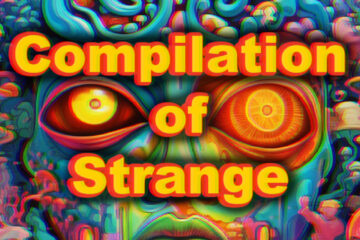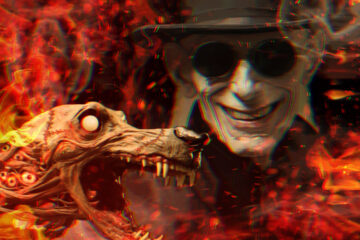Article by Lilly Lutz
The Banshee, known as the Bean Si (Irish- ” woman of the otherworld”), the Bean-Nighe (Scottish- “Little Washer by the Ford”) is a spirit that is prevalent in both Irish and Scottish folklore.
Their appearance and behavior vary slightly between these two regions; both retain the concept of a wailing lament and sorrow for the loss of a loved one. The spirits have long, wild hair and are dressed in ragged gowns, eyes glowing red from continuous crying. The banshee is a harbinger of death, visiting the family of the dying to join them in their mourning. While usually alone, some legends state that a large gathering of banshees in one area means someone holy or noble has died. Whether they are alone or in groups, they can be heard keening (wailing) from a distance. The practice of keening has become a profession among some Irish women, providing company for a grieving family while they mourn.

A banshee will stalk families for generations…
In Ireland, the Bean Si reveals itself only to members of the “old families”: the Milesian or Geraldine clans. They appear as a virginal girl who died young, singing sweetly. Pulled by an otherworldly force, they hang around the family’s estate, either mourning silently under a tree or flying in the moonlight crying from underneath a veil. Their cry is known as the most mournful sound in the world, and if it is heard, someone is the family is facing certain death. [1]
In Scotland, the Bean-Nighe is the spirit of a woman who died during childbirth. This is seen as a premature death; the legend states that if there are dirty clothes left behind, the mother must wash their own clothes until the date of their natural passing. After this, the Bean-Nighe is tasked with eternally washing the grave-clothes of the soon-to-be-deceased. This is a polar opposite to the sweet nature of the Bean Si— an old, decrepit woman with one nostril, a large front tooth poking of their mouth, and long hanging breasts. Legend dictates that if a person sneaks up to the banshee while they are washing clothes and lamenting, they can try and latch on to one of the spirit’s breasts and claim to be their foster child, granting them a single wish. [1]

A banshee can seem both immaterial and material
In both instances, the banshee is a non-violent entity; a messenger of death attached to a certain family, who joins the relatives in their grieving and lament from a distance. The focus on family and bloodlines are key to understanding how far back the concept extends: the passing of wealth, land, or title via lineage was a cornerstone of medieval culture, and this leaked into other cultures as emigration spread and tailored these ideas to their specific region. The Banshee (in its appearance) also harkens back to the idea of an ancestral female patron taking the role of a goddess, watching over and interacting with their descendants when needed. [2]
The banshee is not one of the most prevalent entities in the zeitgeist, mostly lurking in the shadows of more popular and gruesome creatures. The contemporary version of the banshee is a violent monster whose scream can injure or kill humans. In the rare occasion that they make an appearance in media, they are stripped of lore and relegated to the lowest echelons of generic monsters. Without the importance of lineage in modern culture, the spirit has become a footnote; completely removed from its origins and only characterized by its wail and appearance.
[1]- Katharine Mary Briggs- An Encyclopedia of Fairies (pgs. 14-16)
[2]- Bryant Peck- Encyclopedia of Death and The Human Experience (pgs. 95-98)

A banshee’s cry is incredibly haunting




0 Comments